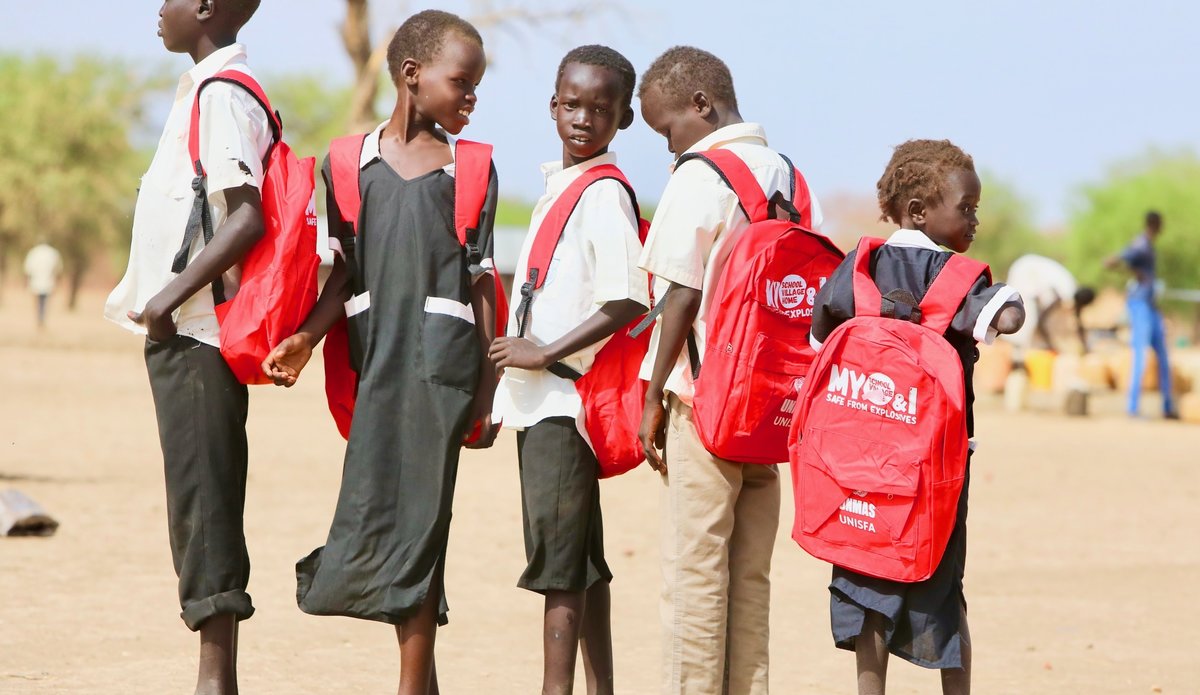On the morning of the 24 June, five children aged between four and 11 were playing by the road in Teshwin village in the Abyei area. Four-year-old Hamdan Beshir noticed something rusty popping out of the cracked soil. Excited at the prospect of a new toy, he dug it out and began playing with it. Fortunately, 10-year-old Amira Ibrahim noticed the new “toy” which Hamdan was fiddling with. She immediately remembered what she had learned in school just three weeks before at a United Nations Mine Action Service (UNMAS) mine risk education session. One of the pictures she’d seen was of a hand grenade and she knew that the pin Hamdan had just pulled out meant danger. She reacted swiftly to protect herself and her friends. She grabbed the grenade from the Hamdan’s hand and threw it across the road, shouting to her friends to run and hide. As they ran for cover, the grenade exploded and pieces of shrapnel flew through the air. Amira, who had sprinted some 15 meters from the explosion, and her friend Haweyda, who had attempted to shield the youngest children, sustained very minor injuries. Their courage and prompt reactions saved lives. UNMAS has delivered hundreds of mine risk awareness courses, many of them in schools in the Abyei area, reaching thousands of people. This incident, which happened soon after Amira’s school received risk education training, is a life and death example of the link between education and safety. UNMAS provided risk education to more than two million people around the world in 2017.

Amira drawing the picture of a grenade in the sand, sitting with her friend Haweyda.

Amira pointing to the explosive device she recognized from an UNMAS Mine Risk Education (MRE) session she attended at her school a few weeks before.

An idea of how minor the injuries were, Amira shows where she was nicked by shrapnel.
As part of its MRE work UNMAS hands out backpacks with training materials in them for students.

